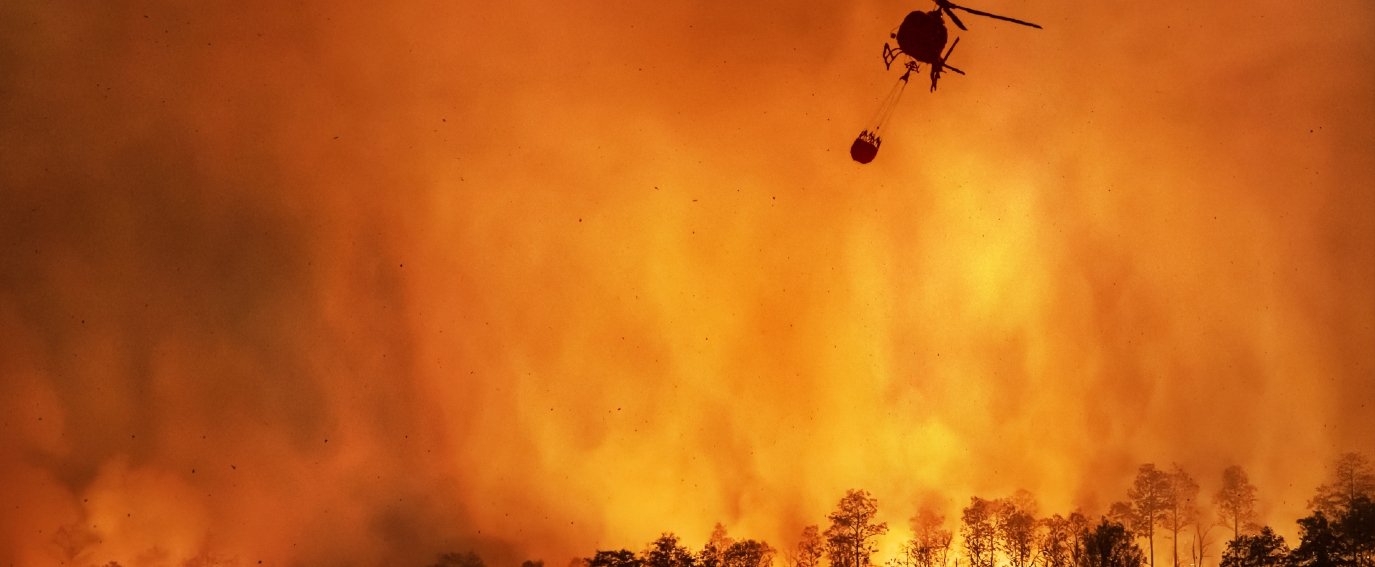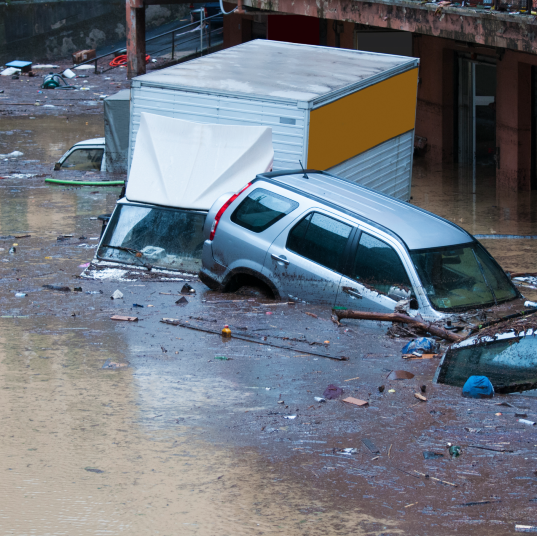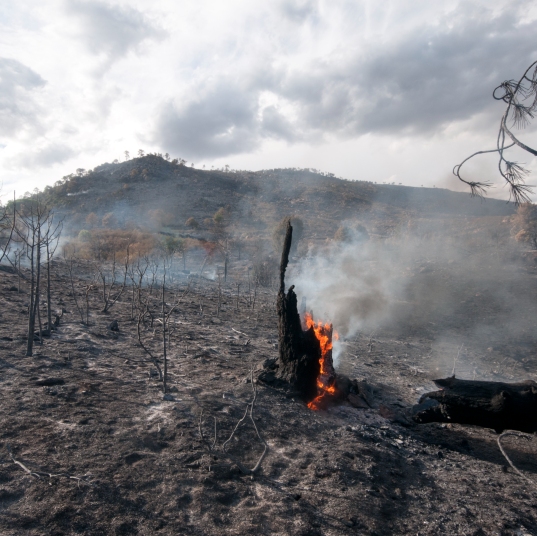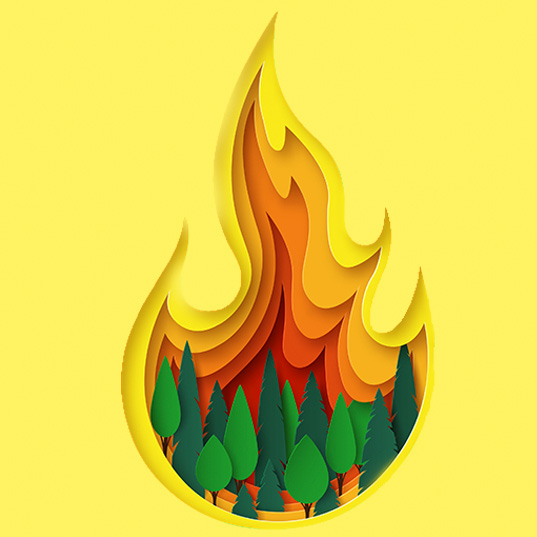Climate change, floods and fires — what's going on?
Soaring temperatures are pushing the planet to the limit, with extreme weather events increasing and sea levels on the rise
The link between climate change and floods is becoming clearer. All you need to do is look at what's happening on our planet. Stories about natural disasters are becoming alarmingly prevalent in the media. The July floods in Germany and Belgium resulted in more than 200 deaths. A few days later, there were floods in China. The storm that struck the city of Zhengzhou left 624 mm of rain in its wake, equivalent to almost a whole year of rainfall, causing 33 deaths and leading to the evacuation of 200,000 people.
Water hasn't been the only antagonist in the climate horror. Fire has ravaged thousands of hectares over recent weeks in Turkey, Greece and Italy, which have all recently suffered from a heat wave that has raised temperatures to record levels.
We have even come to experience what experts call sixth-generation fires — fires that are able to change the weather of the landscape surrounding them and harness this weather in order to spread rapidly.
Devastating fire sources that release so much energy that they generate their own weather just above the flames. This boosts air circulation and allows for a constant supply of oxygen to fire sources, making the fires unstoppable, with columns of up to 30 metres and radiation that can be felt up to 200 metres away. These characteristics make sixth-generation fires almost impossible to extinguish, regardless of the number of people working to do so.
Experts see a clear culprit behind these extreme weather events: global warming. Let us tell you why.
What will I read in this article?
- What is the link between climate change and floods?
- Is climate change causing forest fires?
- Fires stimulate climate change
What is the link between climate change and floods?
 The latest IPCC report warns that the water cycle is intensifying as the planet gets warmer. According to Mathew Barlow, one of the main collaborators in the study, the relationship between climate change and floods is explained by the increase in temperatures, which increases the humidity in the air, in turn leading to a greater chance of more frequent and intense rainfall.
The latest IPCC report warns that the water cycle is intensifying as the planet gets warmer. According to Mathew Barlow, one of the main collaborators in the study, the relationship between climate change and floods is explained by the increase in temperatures, which increases the humidity in the air, in turn leading to a greater chance of more frequent and intense rainfall.
In fact, it has been calculated that daily extreme rainfall will intensify by 7 % for each degree that the global temperature increases. And that isn't the only disturbing fact. In a study published in the journal Nature, the experts behind the Global Flood Database found that between 2000 and 2015, the population of the world exposed to flooding increased by between 20 % and 24 %.
"It has been calculated that daily extreme rainfall will intensify by 7 % for each degree that the global temperature increases"
Climate change and floods are also linked to rising sea levels, putting coastal areas at risk. High-tide floods are already a serious problem in many places and are only expected to worsen.
If we fulfil the provisions of the Paris Agreement and achieve carbon neutrality, the sea level could rise by 40 centimetres. And that's being optimistic. The worst-case scenario would see it rise by 80 centimetres.
Is climate change causing forest fires?
 The IPCC report also stresses that just as wet extremes are increasing, with more intense rainfall in most regions, dry extremes are also on the rise. Desertification and drought, factors closely related to the proliferation of fires, are threatening several regions of the planet.
The IPCC report also stresses that just as wet extremes are increasing, with more intense rainfall in most regions, dry extremes are also on the rise. Desertification and drought, factors closely related to the proliferation of fires, are threatening several regions of the planet.
According to Copernicus, July this year was the hottest month in Europe since records began. Some Mediterranean countries such as Greece recorded temperatures of up to47°C in some cities. But it was Italy that broke the record for the continent. The Italian town of Syracuse reached 48.7°C this summer.
"Great droughts and searing temperatures form the perfect conditions for rapid propagation of forest fires"
Great droughts and searing temperatures form the perfect conditions for rapid propagation of forest fires. According to data from the European Forest Fire Information System (EFFIS), the average number of hectares burnt as of 10 August in previous years was around 165,000. As of the same date in 2021, the figure is
double that at 329,797 hectares. The number of localised fires has also reached double the average from other years. While between 2008 and 2020 there were 507 fires, in 2021 there have already been 1,251.
But that's not all. This summer, the fire in the Sierra Bermeja in Malaga served as Spain's first brush with a sixth-generation fire. However, Portugal experienced this phenomenon in 2017 and the California fires of recent years have also been classified with the same severity. These are fires capable of creating their own weather conditions that help them to spread and, among other complications, evaporate the water dropped by water bomber aircrafts before it falls on their flames.
Climate change in itself does not give rise to these fire sources but it aggravates them, turning them into virulent fires, as high temperatures reduce the moisture of vegetation and this extreme aridity accelerates the spread of flames.
Fires stimulate climate change
Fires are not only a natural disaster because they devour everything in their way, but also because they release a large amount of carbon dioxide into the atmosphere, which is one of the greenhouse gases that, as we've seen previously in this article, is responsible for global warming.
And that's without taking into account the fact that the trees that are carbonised cease to fulfil one of their main functions: absorbing carbon dioxide from the atmosphere. According to World Resources Institute (WRI) assessments, forests absorb 7.6 billion metric tonnes of carbon dioxide worldwide. This figure is equivalent to 1.5 times the United States' annual emissions of this gas.
The link between climate change and floods and the link between global warming and fires are two clear warnings that must compel citizens, businesses and institutions to get involved in climate action. There is only one possible future for the planet, and it involves a decline in CO2 emissions and a clear commitment to sustainable development.
Fuentes:
https://grist.org/science/study-people-are-moving-to-flood-prone-areas-not-away-from-them/
https://www.dailysabah.com/opinion/op-ed/fires-floods-mucilage-whats-happening-in-turkey
https://www.newtral.es/incendios-mediterraneo-turquia-grecia-verano/20210810/
https://www.sostenibilidad.com/medio-ambiente/otros-amazonas-tambien-arden/



